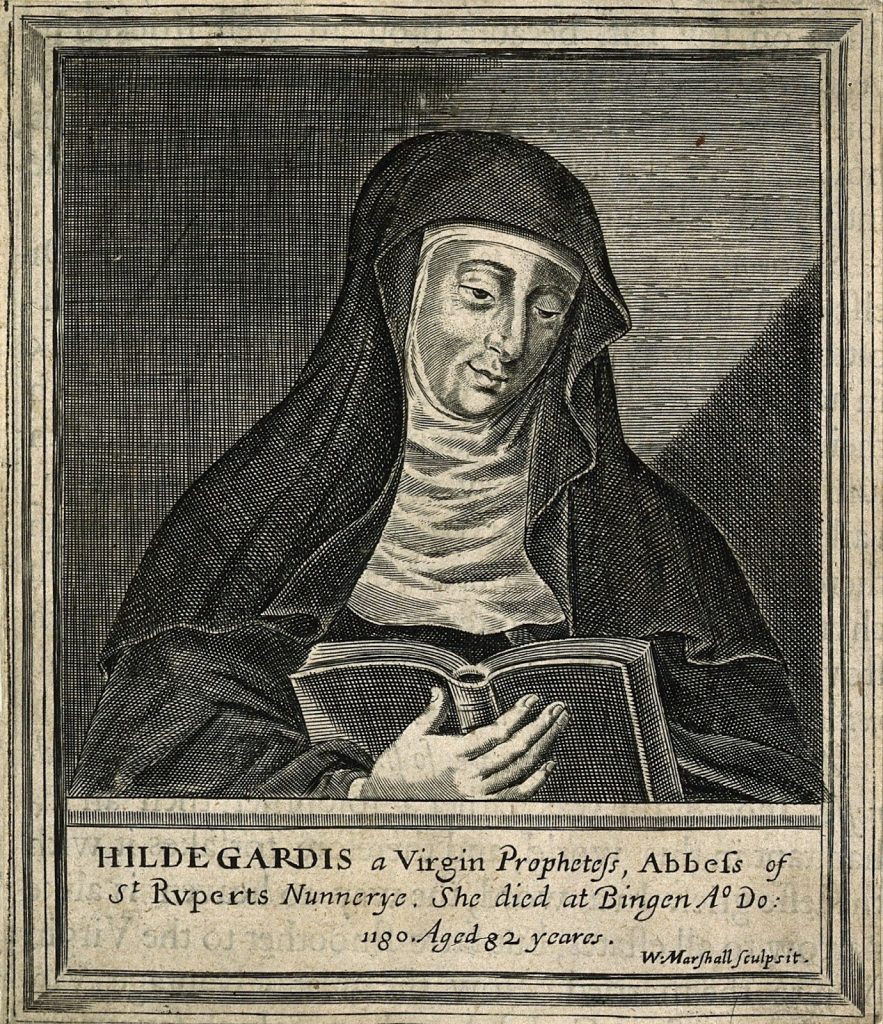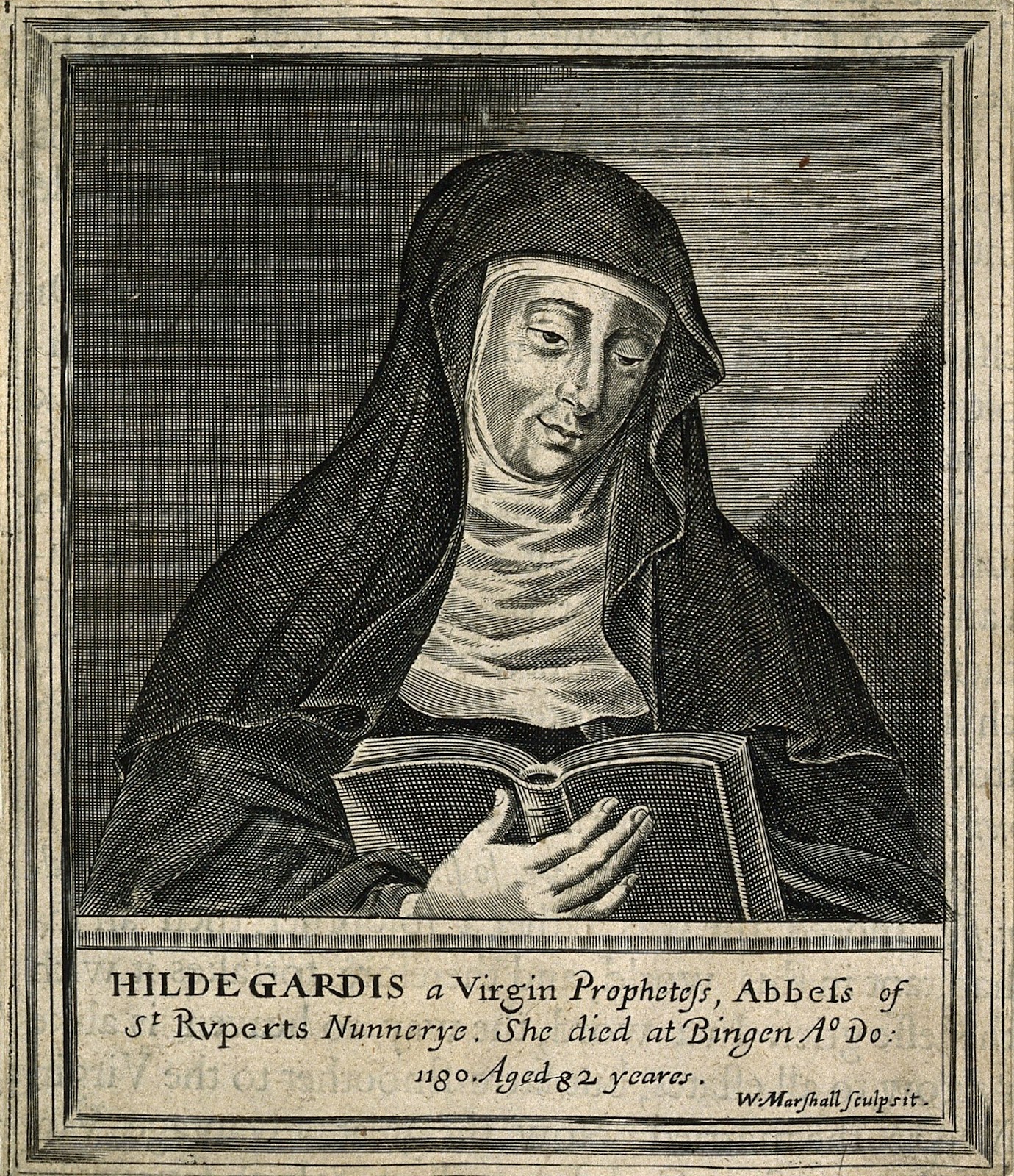


Hildegard was born in Rheinhessen, a region of Germany, in the year AD 1098. Hildegard’s early life reveals a pious upbringing as her parents consecrated her at birth, and as a young child, entrusted her to the care of a Benedictine abbey. As a young woman, Hildegard accepted the habit and life in the convent, eventually taking on the administration of one convent and founding another. Throughout her life, Hildegard received holy visions and she believed she was commanded by God to record her visions. The visions reveal knowledge from multiple disciplines including philosophy, science, art and music.
For Hildegard von Bingen, her philosophical cosmology was that everything came into being by the love of God and must return to it. Her theological positions survive in her principal work, Scivias. Hildegard also authored Liber Vitae Meritorum and Liber Divinorum Operum and although her method of reasoning is defined as analogous, she is certainly not the only philosopher to employ this method over logical reasoning. A vital consideration of Hildegard’s theological merit is the weight that she was afforded with the political and religious leaders of her time. Hildegard is said to have corresponded with leaders throughout Germany and France, and was outspoken against the abuses and corruption of the church.
This illustration is a frontispiece of Scivias, an illustrated work by Hildegard that documented religious visions she experienced.
Sources:
Thompson, Augustine. “Hildegard of Bingen on Gender and the Priesthood.” Church History 63, no. 3 (1994): 349–64. https://doi.org/10.2307/3167533.
For Hildegard von Bingen, her philosophical cosmology was that everything came into being by the love of God and must return to it. Her theological positions survive in her principal work, Scivias. Hildegard also authored Liber Vitae Meritorum and Liber Divinorum Operum and although her method of reasoning is defined as analogous, she is certainly not the only philosopher to employ this method over logical reasoning. A vital consideration of Hildegard’s theological merit is the weight that she was afforded with the political and religious leaders of her time. Hildegard is said to have corresponded with leaders throughout Germany and France, and was outspoken against the abuses and corruption of the church.
This illustration is a frontispiece of Scivias, an illustrated work by Hildegard that documented religious visions she experienced.
Sources:
Thompson, Augustine. “Hildegard of Bingen on Gender and the Priesthood.” Church History 63, no. 3 (1994): 349–64. https://doi.org/10.2307/3167533.
Title of Art: Hilegard von Bingen
Subjects: Hildegard
Subject Century: 12th
Ritual Pose/Object: book
Artist: W. Marshall
Art Form: Illustration
Date of Composition: 1642
VM Image #: 121
Photographer: Public Domain: Wellcome Collection
